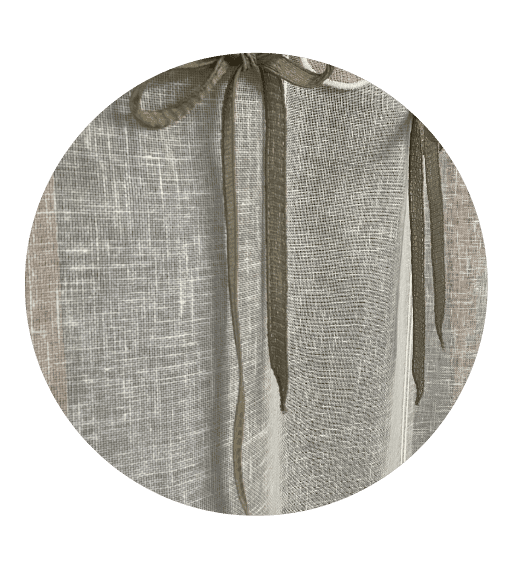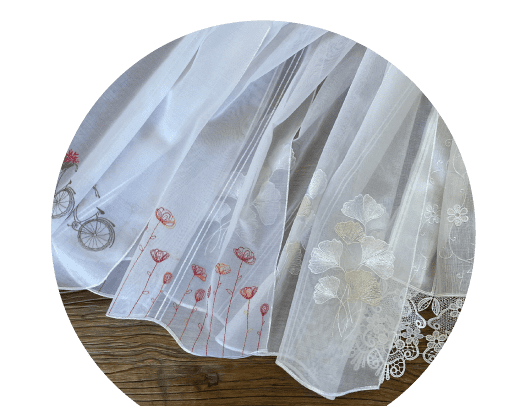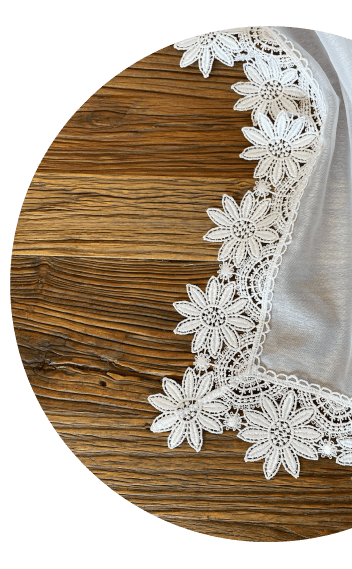Cambresis textile earth
The history of textiles in Cambrésis
![]()
Cambrésis, located in the North of France, has a rich history in the textile industry. In particular, embroidery for curtains and nets played a significant role, reflecting the evolution of techniques and trends over the centuries.
The Beginnings (Middle Ages)
The Cambrésis textile industry took off in the Middle Ages, with the production of woolen cloth. However, embroidery for curtains and nets was still little developed at this time, the fabrics used for windows being mainly simple and functional.
Renaissance and Apogee of Embroidery (16th - 18th centuries)
From the 16th century, with the revival of crafts and the growth of trade, embroidery began to gain importance in the region. The region's weavers and embroiderers are renowned for their know-how and creativity. Embroidery techniques evolved and became more sophisticated, incorporating complex floral and geometric designs.
The Industrial Revolution (19th century)
The 19th century marked a period of transformation for the Cambrésis textile industry. Industrialization led to the introduction of sewing machines and mechanical embroidery looms. These technological advances make it possible to produce embroidery for curtains and sheers on a larger scale and with increased precision. Cambrai became famous for its fine and delicate embroidery, used in bourgeois homes across Europe.
The 20th Century and Innovation
During the 20th century, embroidery for curtains and nets continued to evolve. Styles change with the times, ranging from art deco motifs to modern and minimalist designs. Cambrésis embroiderers innovate by using new materials, such as synthetic fibers, to create lighter and more durable curtains.
The Contemporary Era
Today, the embroidery industry for curtains and sheers in Cambrésis is adapting to contemporary trends and the challenges of a globalized economy. Local artisans stand out for their ability to combine tradition and modernity, producing unique and tailor-made pieces for a demanding clientele. Local initiatives also support the preservation and transmission of this ancestral know-how.
For more information on current products and services, you can visit the site cafe-curtains.com, which highlights the artisanal know-how and tailor-made production of curtains and sheers.


 Français
Français English
English


-copie-04.png)









